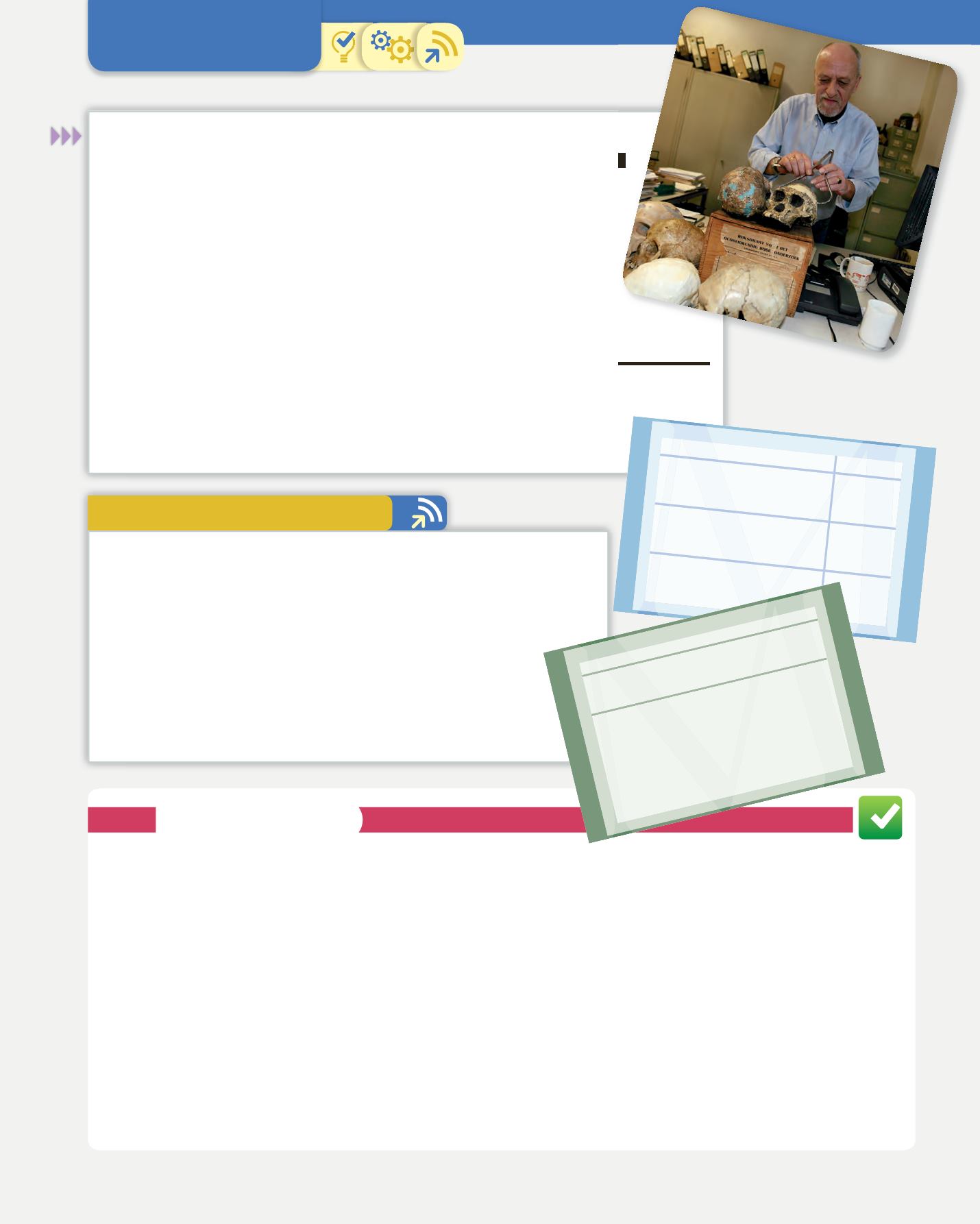
2. The Neolithic period and the Bronze and Iron Ages
43
❚
Read and show your report on the different objects to the other
pairs.
❚
Share your evaluation of the museum with the rest of the class.
Together, write a letter to the people in charge of this museum.
Include a proposal for the aspects which you think could
be improved.
❚
Remember how to structure a letter (the opening, the main
body and the close) and the basic writing rules (order, clarity
and good grammar and spelling). You can either write it on
paper or send it by email.
Communication and publication
❚
During your visit
– Choose the object exhibited in the museum that you found most interesting
and take notes on it. Also take notes to evaluate the museum.
– If you are on a virtual visit, collect images from the web page. If you go
in person, make drawings of your chosen object and other objects which
are similar or were found in the same place. If possible, collect leaflets
and information cards.
– For both types of visit, research what other types of activities usually
take place in this museum.
❚
After your visit
– Using your card to help you, write a report on your chosen object. You can include the
images you collected or the drawings you made.
– Evaluate the museum or its website. Decide together which aspects you
liked most and least.
Final Task
1.
What is the purpose of museums?
2.
What arguments would you use to encourage a friend to visit a museum?
3.
Why is it important to obey the rules in a museum?
4.
Which of the objects selected by your classmates did you think were the most interesting? Why?
5.
What have you learned from the other groups’ reports?
6.
Have you ever written a letter proposing improvements after visiting a museum or somewhere similar?
Why do you think it is important to do this?
7.
What did you agree onwhen youwerewriting your letter together andmakingproposals for improvements?
How did you collaborate?
8.
What have you learned from doing this task?
Paleontology
Department in
the Natural History
Museum of Leiden
MUSEUM EVALUATION
ASPECTS TO CONSIDER
RATING
1. Thebuildingwhichhouses themuseumand its infrastructure.
2. The layoutof themuseumandhow theexhibitsarepresented.
3. The clarity of the information cards.
SELF ASSESSMENT
OBSERVATION GUIDE
1. What is exhibited in this museum?
• Which rooms / galleries / display cases did you visit?
2. What is your favourite object and why?
• What does the object represent? Where is it from? Why was it made? How was it made?
How was it used? What material is it made of? What other objects were made of this
material?
• Who made the object? How did they make it? Was it made by an artist and, if so, why?
Where did these people live?
• What present-day object is it similar to? Why is this object important to us?


